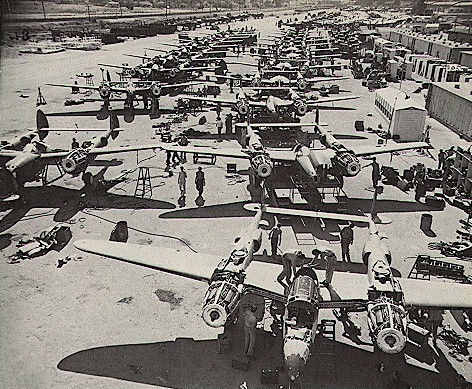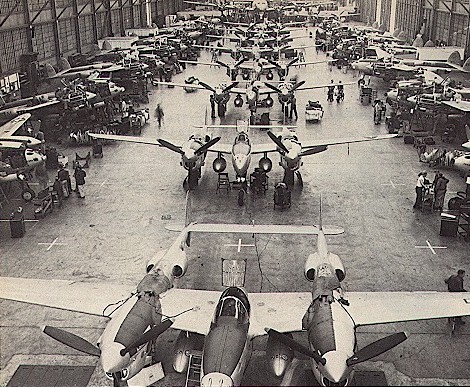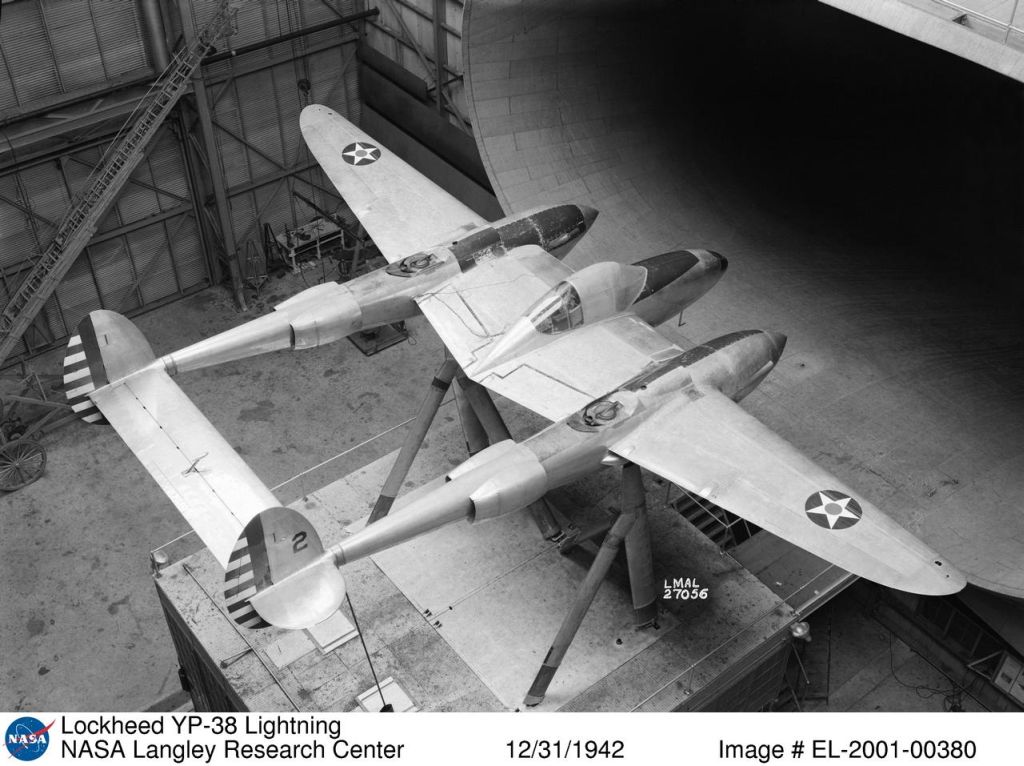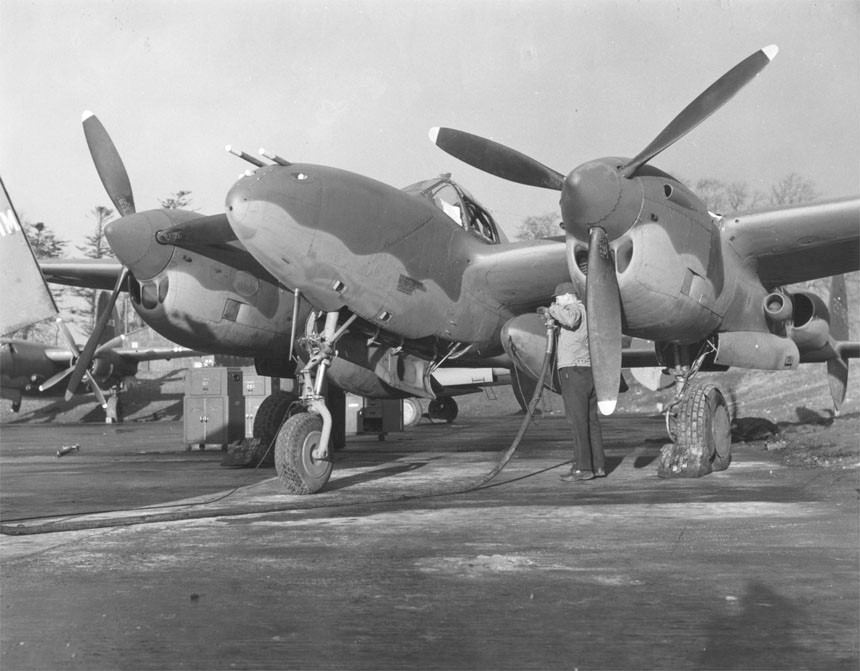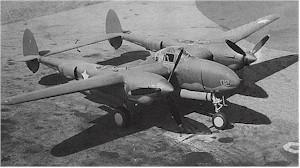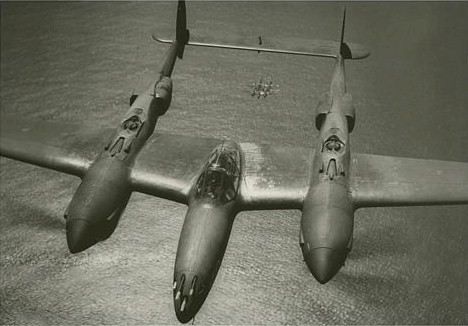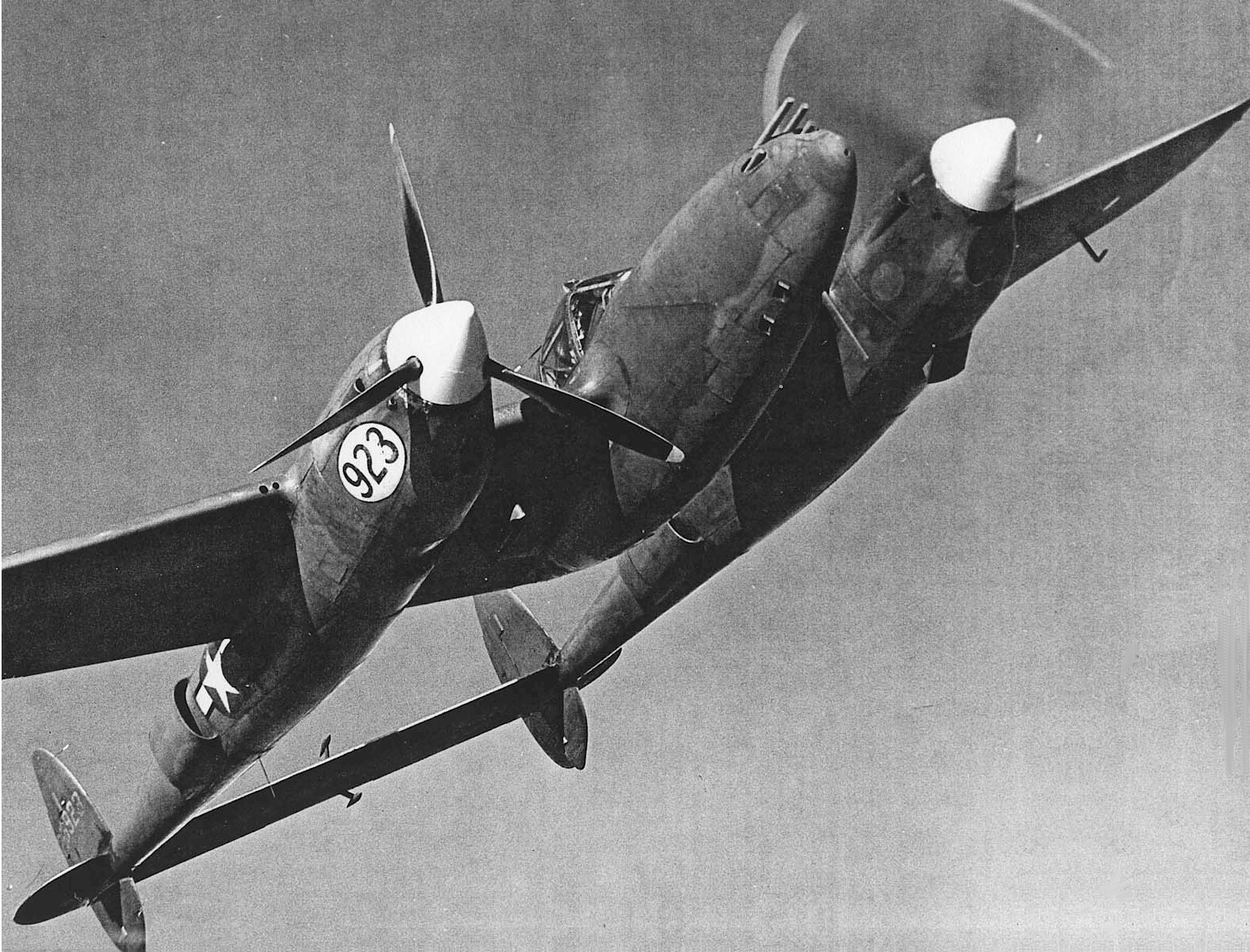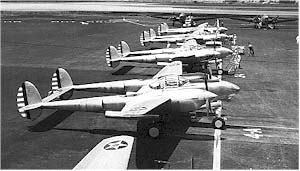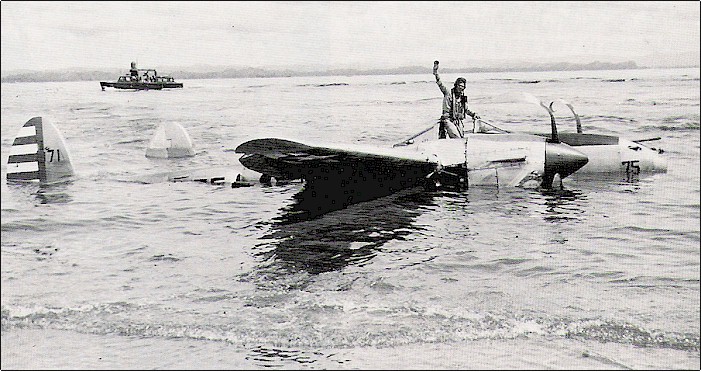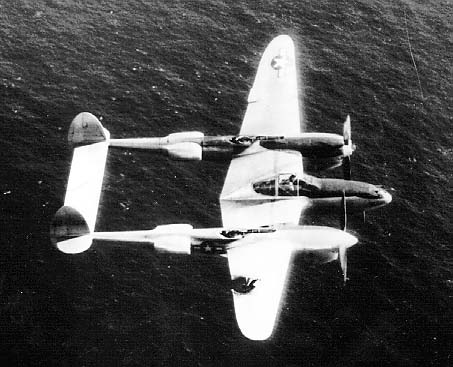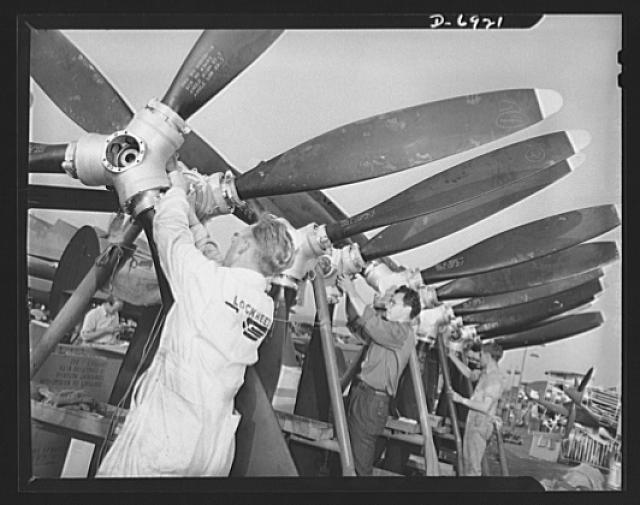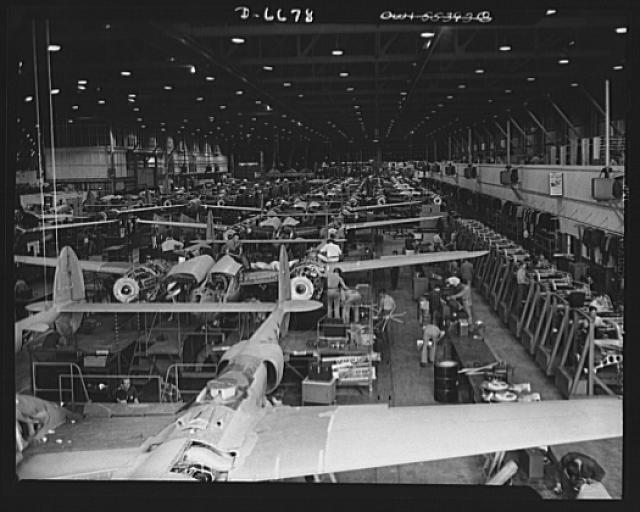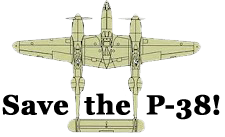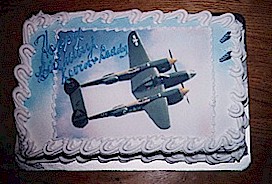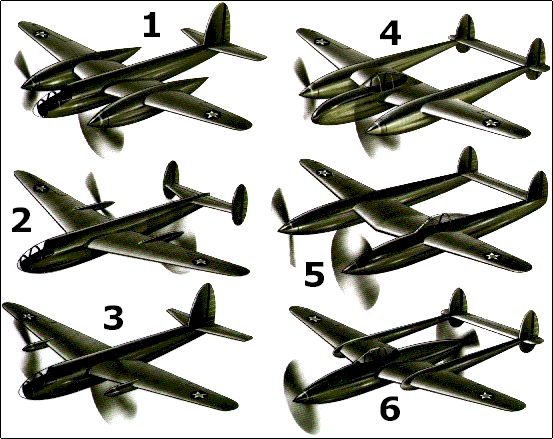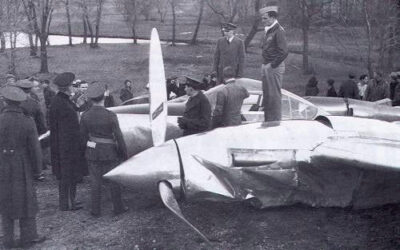Here are a few photos to show you just how versatile the P‑38 was, as well as some just for fun. To see the “triple lines” (which Lockheed was told couldn’t be done), click here. If you’d like to see a ton of photos of the P‑38 during assembly, check this out.
When you click on the thumbnail +, it will take you to a larger version of the photo. Just click the x at the top to close and come back here.
P-38s OUTSIDE THE PLANT
When demand and production was at its height, the final assembly had to be moved outside to accommodate all the P-38s being produced for the war effort.
P-38 PLANT
This photo shows two days of P‑38 production at the Lockheed “Skunk Works” (between 24-30 planes)
P-38 WIND TUNNEL
This unusual photo shows a test of a P-38 in full-scale wind tunnel at the NASA Langley Research Center’s Full Scale Tunnel in Dec ’41 …must have passed the test, eh?
P-38 LONG-RANGE
One of the 38s best features was its ability to travel long, over-water flights. Very useful in the Pacific Theatre.
P-38 GRAVEYARD
Here’s a picture to break your heart. After the war, hundreds of P‑38s were dumped in an aircraft graveyard. Little did they know how sorely we’d miss them in the 21st Century.
P-38 FEATHERED
A P‑38 flying with one prop feathered, putting the kibosh on those rumors that it can’t be flown on one engine. Ha!
Burbank P-38 plant 1941
Burbank plant 1941, new P‑38s in pre-war metal finish with tail stripes and red national insignia.
Lockheed Assembly Plant
Check out these very detailed, original photos of the Lockheed plant in Burbank. You should be able to find just about any part in it’s assembly stage. Amazing.
See All LOCKHEED PLANT Vintage Photos here
These photos include some incredible images of how, fearing enemy aircraft might be flying overhead, they camouflaged the plant so it was invisible from the air.
MECHANIZED CONVEYOR LINES
TRIPLE LINES FOR LOCKHEED LIGHTNINGS

Overall view of Lockheed’s new mechanized P-38 line.
Moving continuously, slowly, yet as surely as the hands of a watch, these three mechanized conveyor lines at the Lockheed Aircraft Corp. more than double the daily output of the old assembly line.
The P-38 “Lightning” fighters come down the line at the right and are shunted over to the middle line where they grow their wings and engines.
They then move backwards to the far end of the huge Final Assembly Hangar to go out the door and into a nearby paint hangar where they are camouflaged.
Working exactly as an automobile assembly line, this mechanized line at Lockheed is notable not only because it is the first continuously moving final assembly line for combat aircraft in the West but, it also does what many experts said couldn’t be done by putting twin-engined “Lightnings” on a full production basis.
The room shown here was completely emptied of airplanes, which meanwhile were completed on an impromptu outdoor line.
In eight days, the new mobile line was set up ready to receive its new quota of airplanes.

